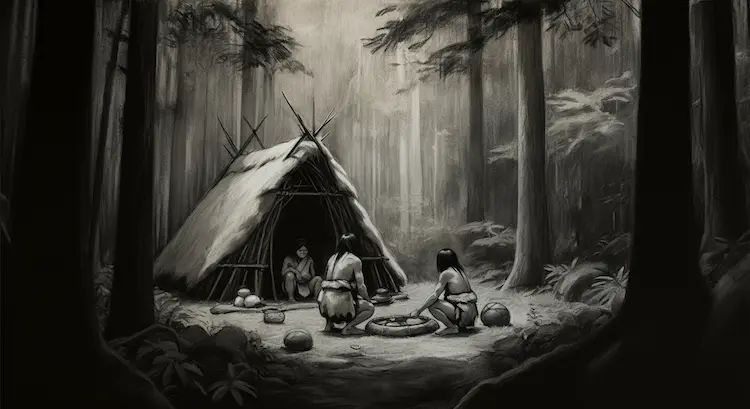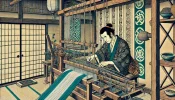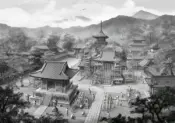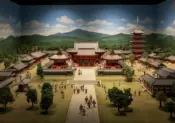Uncover the Ancient Secrets of Nara: From the Jomon to the Yayoi Era
Nara Prefecture is more than a historical treasure trove; it is the cradle of Japanese civilization. From the hunter-gatherer societies of the Jomon period to the agricultural revolution of the Yayoi period, Nara’s history offers a profound look at the origins of Japan’s culture and traditions. This article invites you to journey back thousands of years and discover how the landscapes of Nara nurtured the people who laid the foundation for modern Japan.
1. The Jomon Period: Living in Harmony with Nature
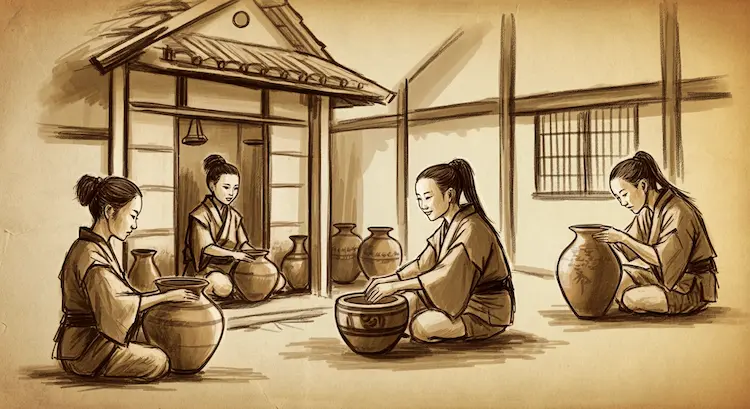
The Jomon period, dating back roughly 13,000 years, represents a time when humans first began to settle in the fertile lands of what is now Nara. The people of this era relied on hunting, fishing, and gathering, creating a lifestyle deeply intertwined with nature.
- Art and Tools: Nara is home to numerous archaeological findings from this period, including intricately designed Jomon pottery. These vessels, often adorned with rope-like patterns, were not only practical but also a testament to the artistic sensibilities of early inhabitants.
- Archaeological Sites: Excavations in the Nara region have revealed settlements near Mount Miwa and the Yamato River. These sites suggest that the area’s abundant natural resources made it an ideal place for early communities to thrive.
The Jomon people lived with a profound respect for nature, a value that still resonates in Japan’s cultural identity today.
2. The Yayoi Period: The Dawn of Agriculture
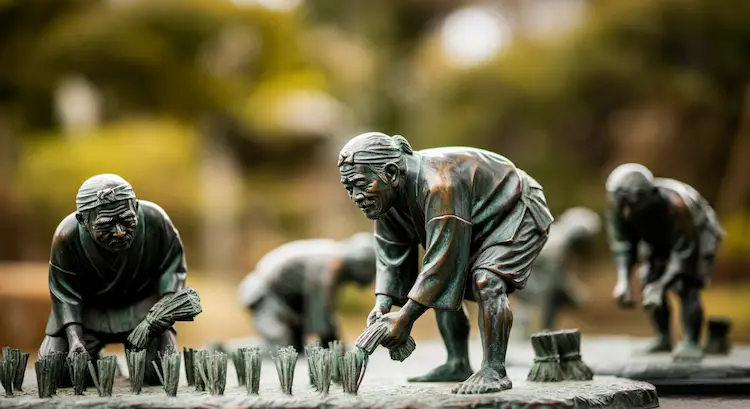
Around 300 BCE, the Yayoi period began, ushering in significant changes in lifestyle and technology. This era marked the introduction of rice farming, which would become a cornerstone of Japanese culture.
- Agricultural Revolution: The fertile plains of the Nara Basin were perfect for rice cultivation. Yayoi people constructed irrigation systems and began organizing their communities around agricultural production.
- Technological Advancements: This period saw the arrival of iron tools and weapons, which greatly improved efficiency in farming and construction. Artifacts such as iron sickles and plows found in Nara provide a glimpse into these innovations.
The transition from the Jomon’s hunter-gatherer lifestyle to the Yayoi’s structured agricultural society laid the groundwork for more complex civilizations.
3. Comparing Jomon and Yayoi Lifestyles
The shift from the Jomon to the Yayoi period wasn’t just about technological advancements—it was a cultural evolution.
- Lifestyle: While the Jomon people valued community and spiritual connection with nature, the Yayoi period emphasized productivity and societal organization.
- Cultural Artifacts: Jomon pottery’s artistic flair contrasts with the more functional Yayoi designs, reflecting a change in priorities.
These differences highlight the dynamic progression of human society in Nara, bridging two distinct eras.
4. Nara’s Legacy: The Foundation of Greatness
The contributions of the Jomon and Yayoi periods are not just chapters in history—they are the roots from which Nara’s later greatness grew.
- Natural Significance: The Nara Basin’s fertile soil and abundant water resources played a pivotal role in these early civilizations.
- Cultural Continuity: Practices like rice farming and respect for nature have persisted through centuries, influencing Nara’s development into a cultural heartland.
5. Modern Connections to the Past
Today, Nara’s ancient history is not lost but celebrated.
- Visit Historical Sites: Explore the Nara Prefecture Archaeological Institute or walk the grounds of preserved Jomon and Yayoi settlements to connect with this ancient legacy.
- Interactive Experiences: Participate in workshops that teach traditional pottery-making or simulate Yayoi-era farming techniques, bringing history to life.
These activities allow visitors to step into the shoes of Japan’s earliest settlers, fostering a deeper appreciation for their contributions.
Conclusion: A Timeless Journey
The Jomon and Yayoi periods are more than distant epochs—they are the beginnings of the story that shaped modern Japan. By exploring Nara’s ancient roots, we not only learn about the past but also gain insights into the enduring spirit of the Japanese people. Plan your visit to Nara and immerse yourself in a journey through time, where every artifact and story reveals the heart of a nation.
